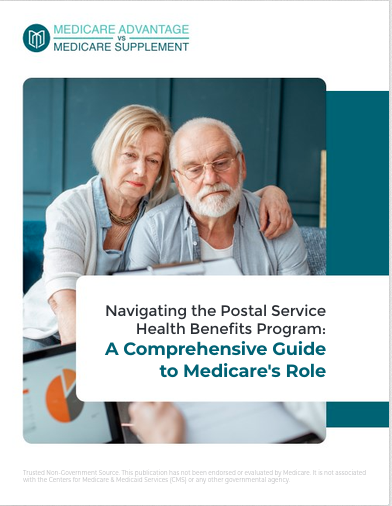Key Takeaways:
- Understanding how Medicare covers prescription drugs is essential for managing your healthcare expenses and staying within budget.
- By choosing the right Medicare plan, you can avoid unexpected out-of-pocket costs and gain peace of mind about your medication needs.
Why Prescription Drug Coverage Matters More Than Ever
Prescription drugs are an unavoidable part of healthcare for many people, especially as you age. Without proper coverage, these costs can quickly spiral out of control. Medicare’s prescription drug coverage exists to protect you from the financial strain that often comes with managing chronic conditions, acute illnesses, or preventative medications.
But knowing what’s available—and choosing the right plan—can feel like navigating a maze. Let’s break it down so you can make informed decisions that benefit your health and your wallet.
Medicare Prescription Drug Coverage Basics
Medicare Parts Overview
Medicare offers different parts to cover specific healthcare needs:
- Part A (hospital insurance) and Part B (medical insurance) form the foundation of Original Medicare.
- Part C, also known as Medicare Advantage, often bundles additional benefits like prescription drug coverage.
- Part D is dedicated solely to prescription drug coverage, helping pay for both generic and brand-name medications.
What Part D Covers
Medicare Part D is available through standalone plans or as part of a Medicare Advantage plan. Coverage typically includes:
- Generic Drugs: Low-cost alternatives for common prescriptions.
- Brand-Name Drugs: Medications for specialized or chronic conditions.
- Tiers of Coverage: Plans categorize medications into tiers, with costs increasing from generics to specialty drugs.
When to Enroll in Medicare Prescription Drug Coverage
Initial Enrollment Period (IEP)
Your IEP is a seven-month window that begins three months before you turn 65 and ends three months after your birthday month. This is your first opportunity to enroll in a Part D plan without penalties.
General Enrollment Period (GEP)
Missed your IEP? You can sign up during the GEP, which runs from January 1 to March 31 annually. However, a late enrollment penalty may apply.
Annual Enrollment Period (AEP)
From October 15 to December 7 each year, you can add, drop, or switch Part D or Medicare Advantage plans. Changes take effect on January 1 of the following year.
Special Enrollment Periods (SEPs)
Certain life events—like moving to a new coverage area or losing employer-sponsored insurance—may qualify you for an SEP to make changes outside regular enrollment periods.
Costs You Should Expect
Monthly Premiums
Every Part D plan has a monthly premium, varying depending on the provider and coverage level.
Annual Deductibles
Before coverage kicks in, you may have to meet a deductible. In 2024, this can be up to $545 for most Part D plans.
Copayments and Coinsurance
Once coverage begins, you’ll share costs through copayments or coinsurance, which can vary depending on the tier of the medication.
The Coverage Gap (Donut Hole)
After you and your plan have spent a certain amount on covered drugs, you may enter the “donut hole.” Here, you’ll pay a larger share of costs until reaching catastrophic coverage. The good news? Recent changes have reduced the financial burden in this phase.
Understanding the Impact on Your Budget
Without proper drug coverage, out-of-pocket medication costs can run thousands of dollars annually. Here’s why Medicare’s prescription drug coverage is so important:
- Predictable Costs: With a plan, you know what to expect regarding premiums, deductibles, and copays.
- Peace of Mind: Coverage shields you from high costs for essential medications, ensuring you get the care you need without financial strain.
- Long-Term Savings: Preventative medications and early treatments often cost less than addressing complications later.
Tips for Choosing the Right Plan
Compare Formularies
Each plan has a formulary (list of covered drugs). Ensure it includes your current prescriptions to avoid unexpected expenses.
Check for Restrictions
Plans may have rules like prior authorizations or step therapy. These could delay access to medications, so understand the conditions before signing up.
Evaluate Pharmacies
Not all pharmacies are treated equally by Part D plans. Using in-network pharmacies can save you significant money on your prescriptions.
Anticipate Future Needs
While you might not need extensive coverage now, consider the potential for future health changes when selecting a plan.
Maximizing Your Coverage Benefits
Utilize Preventive Care
Many plans offer free or low-cost preventive services, including immunizations and wellness checkups. Staying ahead of potential health issues can reduce medication needs and costs.
Reassess Annually
Plans change every year, as do your healthcare needs. Reviewing your options during the AEP ensures you’re not paying for unnecessary coverage—or missing out on savings.
Ask for Help
If you’re unsure about your options, resources like Medicare counselors or online comparison tools can clarify your choices and guide you to the best plan.
Common Pitfalls to Avoid
Ignoring Late Enrollment Penalties
Delaying enrollment without creditable coverage leads to lifelong penalties. These fees are calculated based on the length of time you went without coverage, so it’s crucial to enroll on time.
Overlooking Drug Tiers
Choosing the cheapest plan without considering its drug tier structure can lead to higher out-of-pocket costs for your specific medications.
Skipping Reviews
Assuming your current plan is “good enough” can cost you. Always double-check formularies, costs, and restrictions annually to avoid surprises.
Why Prescription Drug Coverage is Worth It
Medicare’s prescription drug coverage does more than save you money—it provides stability in your healthcare planning. By choosing a plan that meets your needs, you protect yourself from the unpredictability of rising drug prices.
Planning and choosing wisely ensures you maintain your health without compromising your financial well-being. Remember, it’s not just about today’s prescriptions but also being prepared for tomorrow’s needs.
How to Stay on Top of Your Coverage
Keeping up with changes in Medicare requires attention, but the benefits outweigh the effort. Here’s what you can do:
- Set Reminders: Stay aware of key enrollment dates.
- Track Spending: Monitor your prescription costs and track your progress toward coverage phases.
- Keep Updated: Medicare releases updates yearly, so make it a habit to review them.
Protect Your Budget and Your Health
Navigating Medicare prescription drug coverage doesn’t have to be overwhelming. By understanding the options available, you can secure a plan that fits your needs and protects your finances. Remember, your health is worth the investment, and Medicare’s prescription drug coverage is a tool that ensures access to the care you deserve.










